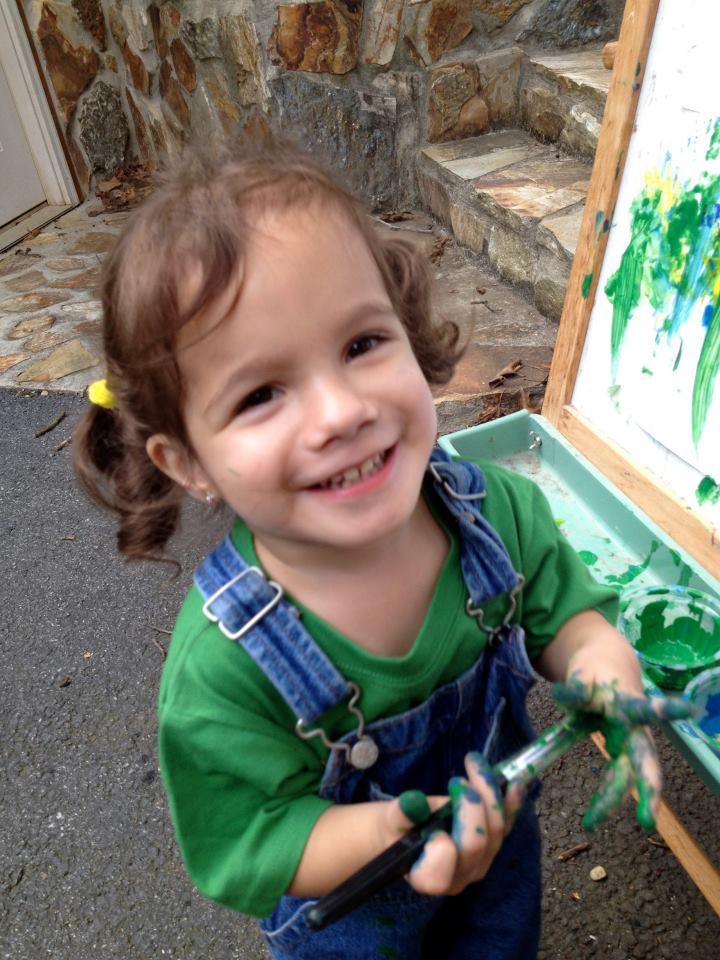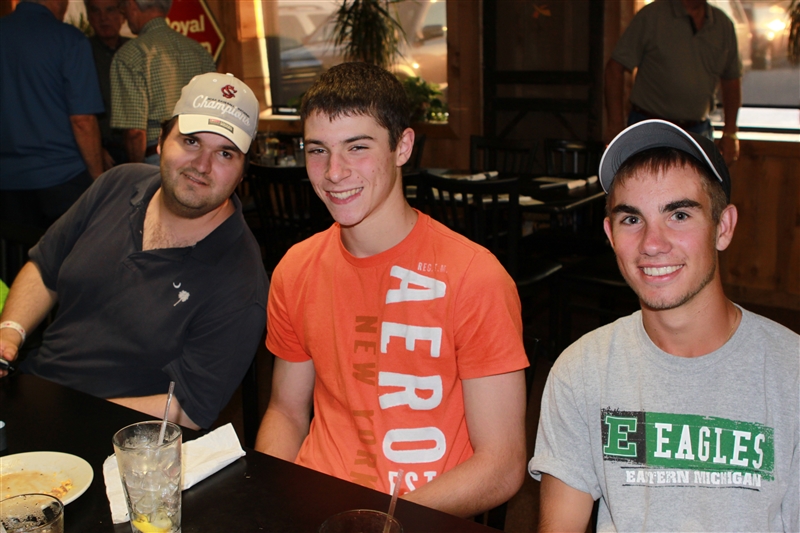Pediatric Physical Therapist, Fran Arkusinski, discusses orthotics
How Many AFOs
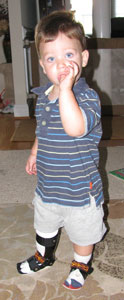 QUESTION:
QUESTION:
I was wondering what the PT thought about AFO/DAFOs and how many our children should be wearing – one or two. Our PT asked me to get two DAFOs for my son, and it took two months to get a doctor to approve them, and only after I insisted! It was a very frustrating process, and other PTs (other than our regular) seem to think it’s a bad idea because it could cause the muscles in his unaffected side to atrophy. Then on the list I was talking with someone and they thought most kids had two. Is it a location thing – like does everyone in Florida get taught only one brace and people in Idaho get taught two?
ANSWER:
Foot orthotics are very individual, and there are many schools of thought. These schools can definitely be regional. We need to branch out! It depends on the degree of orthopedic and neural involvement, and on personal preference. I always shoot for the least a child can be functional with.
I rarely observe a need for bilateral DAFOs for a child with hemiplegia, unless there is a lot of overflow tone or additional contributing factors. Often, something “lower”, such as a shoe insert or insert that goes just above the ankle, inhibits any tonal overflow and resultant postural challenges. Things you need to remember as the parent are:
- What are you seeing? Is your child doing better with the additional orthotic in, or does he/she do the same or better barefoot or with a good shoe on?
- Are you observing any atrophy? I does not take long for unused muscles to be affected.
- Is there a valid reason for each component of the orthotic…i.e. it needs to go up to the knee or my child’s ankle is in a bad position and he trips; it is in partial dorsiflexion as his knee control improves; or it has tone reducing qualities and his foot stays in it better.
- Do not underestimate your knowledge and ability to discern how well an orthotic is working.
- Make certain your therapist and orthotist work well together. By this I mean, they challenge each others ideas and are able to agree on a solution WITH your input and goals in mind.
Knee Hyperextension
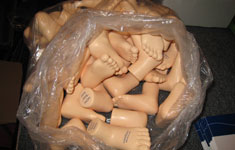
QUESTION:
My daughter, now 15mths. and not walking yet, has been wearing an AFO for about 6 weeks now. We have noticed improvement in her strength and balance; I think mostly because all she wants to do is walk all over holding our fingers and my back is sore! Anyway, the AFO has helped her hold her foot flat in the correct position, however, she still is back-kneeing or hyperextending her knee when she stands and walks. Our new PT told me the other day that he thought she needed a brace that went all the way up to her hip to stop the hyperextension. I called our orthotist and asked him and he said that all he needed to do was change the degree to which the brace pulls/holds her foot and toes to help the knee. I’m not sure who to listen to. Our orthotist said that she didn’t need such a heavy and hinged brace. What is your opinion about correcting hyperextension in the knee with braces?
ANSWER:
It sounds like your daughter is very close to taking off! Without the complications, the “norm” for walking is up to 17 months. One of my children did not walk until 18 months, and I took a lot of teasing for not facilitating him!
Knee hyperextension (HE) in very difficult to control, and there are varying opinions on the subject. I strongly agree with your orthotist on this one. An orthotic that goes up to the hip is cumbersome and tends to restrict general floor mobility which children need. It also is so supportive it does not allow for functional strengthening. In addition, a higher orthotic make it tough for kids to dress themselves. Setting Ashley’s AFO in slight dorsiflexion of about 5-10 degrees, depending on your child, often will deter knee HE. Dorsiflexion is the opposite of pointing the foot down, where the forefoot is lifted such as in tapping your foot. I couple this approach with strengthening and balance activities. There is still some incidence of HE in many cases, but significantly less frequently. I would highly recommend you try this modification to the AFO first…you can always do more later.
Do not forget to take care of your back! Try transitioning her to a sturdy little grocery cart as soon as she is able. You may need to weight it down for safety. When you do help her walk, tighten your stomach muscles while you do it to protect your back. This is tough work, and you do not want to be visiting a PT yourself.
DAFOs and Toes
QUESTION:
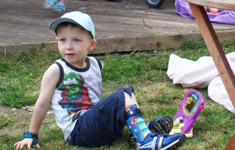 My son wear DAFOs to support weak ankles. The DAFO on his left leg extends up his calf because he hyperextends his knee. He has worn these for years. I have recently become aware that he has little use of his toes now.
My son wear DAFOs to support weak ankles. The DAFO on his left leg extends up his calf because he hyperextends his knee. He has worn these for years. I have recently become aware that he has little use of his toes now.
Our PT explained that when DAFOs are used there are certain muscles that deteriorate from non-use. Is this true? She feels that the benefit he receives from wearing them far outweigh how they may be hurting him. All I know is that at one time he could pick up things with his toes and now he can’t. I am concerned about this. Are there things I can do to help him regain what he has lost?
ANSWER:
You packed several questions into one! OK, here we go…
Your PT is correct that with use of a DAFO some muscles may deteriorate. What you have done is given up some mobility in favor of stability. I dread seeing any loss of movement, however, and appreciate your concern.
It sounds as though your son’s ankle, as well as his knee are involved. First, it is very difficult to control knee hyperextension. If you notice an appreciable difference with the DAFO in controlling his knee, you are headed in the right direction.
I do not know enough about his orthotic or foot to give you specific advice, but I can tell you that you can often maintain control of the ankle while allowing some movement in the toes. Doing so is your best bet for strengthening this area as it involves regular functional use of the muscles.
Now, I have some questions for you. Did your sons toes curl strongly and feed into his tone when the orthotic was fit? If so, this would be a reason why toe movement was inhibited in the orthotic. If not, is the foot plate (bottom part that the foot rests on) of your son’s orthotic stiff, or flexible where the toes rest? Does it extend to the tip of the toes? When tolerated, I prefer to allow for movement of the toes with either a material that will flex where the toes rest, or by ending the orthotic just before the MTP joint (which is the at the base of the toes). Such flexibility prevents vaulting over the orthotic by allowing the toes to extend (bend back) and can facilitate push off with active toe flexion (curling down). Walk around the room once and feel how much your toes move.
All of this input is dependent on your sons abilities, but if he was able to pick things up with his toes in a controlled fashion he did at one time possess active toe flexion. To regain this motion, you will need to address it in an isolated fashion for several months. Unless you want to continue with exercises long term, which is not generally an optimal idea, you then need to incorporate the movement he gains into his every day activities….the obvious one being walking. Work with your orthotist and therapist together to achieve your family goals.
Isolated activities which address toe flexion and extension include the following:
- First passively bringing him through the movement with your hands and then encouraging him to actively help you. Try tickling his foot if this is fun for him and see if he curls his toes reflexively in play. If so, this is a good start.
- Having him rest his foot on a tissue or paper towel and try to scrunch it by curling his toes.
- Encouraging toe wiggling in the water, sand, shaving cream or paint. Outside in the summer is a great place for this activity.
As progression occurs, more difficult skills include:
- Picking up cotton balls with his toes and releasing them
- Picking up marbles with his toes and releasing them
- Picking up pennies with his toes and releasing them (this is easier on softer surfaces)
If your son tolerates it, as his therapist I would like to try some facilitory vibration and/or electrical stimulation to help regain this skill.
Less Restrictive AFO
QUESTION:
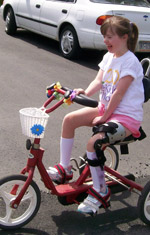 My daughter’s PT is telling us that if she strengthens her legs, we’ll soon be able to go from an AFO that’s above her ankle, to a simple shoe insert. She’s doing all sort of leg exercises with weights. How can you tell when it’s time to go to a less restrictive orthotic?
My daughter’s PT is telling us that if she strengthens her legs, we’ll soon be able to go from an AFO that’s above her ankle, to a simple shoe insert. She’s doing all sort of leg exercises with weights. How can you tell when it’s time to go to a less restrictive orthotic?
ANSWER:
An AFO fixes your daughter’s ankle, not allowing for any movement to give her stability. It has a great impact on the biomechanics of walking, and therefore dictates what muscles your daughter uses while walking (not just her ankle muscles). Your PT is working to strengthen those ankle muscles (and hip/knee/trunk muscles that work with them) to allow her to walk with less support. This transition can be precarious, but is well worth the effort when appropriate. Readiness to go to a lower orthotic is a professional call, and it is difficult to tell you exactly when your daughter will be ready. I can share with you the steps leading to this achievement.
Your child most likely has a good contraction of the targeted muscles by this point, or your therapist would not have introduced a lower orthotic as an option. After this, we look for movements of the targeted muscles against gravity, such as pulling up toes/forefoot while standing (AKA dorsiflexion). Next, restrictive movements are attained, such as pointing toes/forefoot (plantarflexion) to squish play-doh. The resistance in the clinic may be provided by weights or the therapist’s hands. At various times, steps will be practiced/observed with the amount of support limited.
At some point, walking without the AFO with the therapist closely guarding/observing will take place. She will inquire how your daughter is doing at home without her AFO when she is taking a break from it or at bath time. When she appears to have functional strength to introduce walking with less support, a shoe insert will be made and most likely she will wear it intermittently with her previous orthotic. Another option is introducing more movement into her current AFO. At this time, exercises can be made more specific to address problem areas. Eventually, just wearing the lower orthotic allows the muscles to stay functionally strong, and you can discontinue those boring exercises!
Valgus Knee Alignment
QUESTION:
On this thread about afos/dafos, we saw our PT and asked about them. She certainly didn’t think that the low cut were an option yet and a PT with Rainbows thought that the hinged afo would be a good idea. She is even pulling up better in the afos.
She has mild left hemiplegia with primarily left arm involvement. She has generalized hypotonia which is obviously responsible for most of her ankle and foot problem. She has a pronation deformity on both feet while weight bearing (hence the afo’s) and when she walks she also has a valgus deformity of the RIGHT (non affected) knee. The left leg is fine. When she walks the right knee bends in and creates a type of irregular gait. Is this the hypotonia causing this? I don’t know if any of you remember me talking about how she would willfully pop her knee joint out of place when she got frustrated as a younger baby. The joint would move apart at least 2-3 cms. She doesn’t do it “much” anymore. We had that look at and the ortho said it will improve as she gets stronger (it has). I don’t know if there is a relationship.
What is done about the knee? Braces/PT/Strengthening/ or will it correct as she develops more strength? What is the physical weakness in the knee to allow this?
ANSWER:
In regard to your daughter’s valgus knee alignment…
Valgus means bent or twisted inward. It can be used to describe bony alignment anywhere in the body, but parents often see it in reference to the knees. The slang for knee valgus would be “knock kneed”. We used to remember it in school as seeing an “L” shape to the leg in vaLgus. The opposite of valgus is varus, which means bent or twisted outward. The slang for knee varus is “bow-legged”.
As it sounds like you are aware, forefoot pronation does place stress on the inside of the knee and is a significant contributing factor to knee valgus. As to why it has occurred on one side and not the other, there are 2 main probabilities. (I am assuming that you have ruled out a leg length discrepancy.) One is that she may bear more weight on the right. We all generally favor one side over the other, and when even mild upper extremity hemiplegia is present it is often the uninvolved leg that is favored. The remaining explanation is that her right knee may have been less structurally able to take valgus stress than her left. There is no specific muscle that prevents C; rather, there is a range of balance between muscles surrounding the knee that promotes functional alignment. In this case, the pronated foot challenged structural alignment past its staying power. The medial collateral ligament is generally lax when valgus is present. In addition to low muscle tone, your daughter also has ligamentous laxity in that area.
General strengthening in play will assist improving overall strength, but strengthening while out of alignment, or in valgus, will not assist as much if at all. If the AFOs improve foot position and decreases valgus, there is increased chance improved overall balance of muscle and structure over time. Strengthening in non-weightbearing play may also be recommended by your therapist, where alignment can be more readily controlled.
Keep in mind, that as she walks more and continues to grow, the lever arm (her leg) becomes longer and therefore places more force on the knee when there in valgus. Bracing is sometimes recommended if there is pain, or the situation is worsening. This is a very individual call, and any brace which impacts the alignment may interfere with movement. If there is no pain or danger of injury to the joint , I am very skeptical of getting between a child and moving.
Using Evidence to Select an Ankle Foot Orthosis (AFO) for Children With Cerebral Palsy – From the American Physical Therapy Association
O and P.com orthotics and prosthetics information
Caring for Children with Orthotic and Prosthetic Needs
Cascade Orthotics manufacturer of pediatric ankle and foot orthotics
Walk Aide (foot drop stimulator) article: Acceptability and potential effectiveness of a foot drop stimulator in children and adolescents with cerebral palsy. 2012. Maryland
Links to Journal Articles
Effects of ankle-foot orthoses on hemiparetic gait, March 2003, Turkey
Stair locomotion in children with spastic hemiplegia: the impact of three different ankle foot orthosis (AFOs) configurations. Shriner’s Hospital, Oregon. October 2002
Immediate and long-term effects of ankle foot orthosis on muscle activity during walking 2002
Effect of a rigid ankle-foot orthosis on hamstring length in children with hemiplegia Jan. 2002
The effect of shoe wedges and lifts on symmetry of stance and weight bearing in hemiparetic individuals



